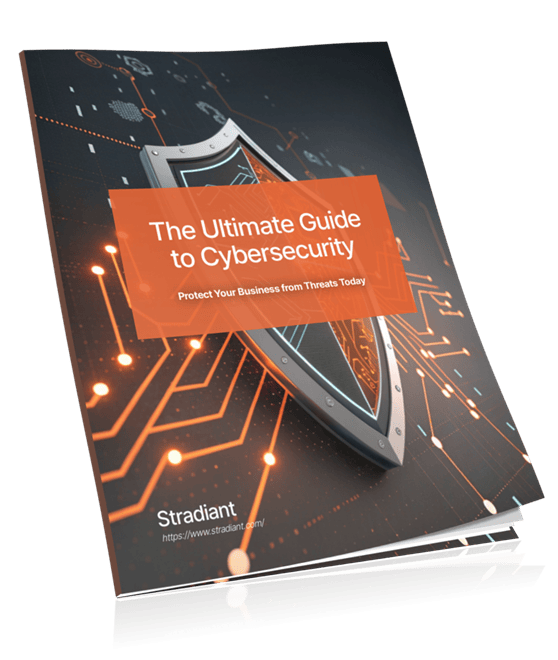IT budgeting for the rest of the year and 2025 is crucial for business success. A strategic budget is more than just a financial plan; it outlines how to achieve organizational goals and encourage innovation.
A well-planned IT budget can:
- Drive your organization towards sustainable growth
- Give you a competitive edge by aligning technology projects with business goals
We’ll guide you through the essential aspects of IT budgeting, including:
- Understanding the IT budgeting process
- Key components to include in your budget
- Strategic initiatives for 2025
- Leveraging cloud solutions and Managed Service Providers (MSPs)
- The importance of cybersecurity and employee training
With these insights, organizations can navigate the complexities of IT budgeting and position themselves for future success.
Understanding The IT Budgeting Process
Crafting a successful IT budget requires a systematic approach. Here are the detailed steps to guide you through the IT budgeting process:
- Assess Current IT Expenditures: Review past budgets and actual spending to identify trends and areas for improvement.
- Define Business Objectives: Align the IT budget with strategic business goals to ensure support for key initiatives.
- Identify Key Components: Include essential elements such as hardware, software, staff expenses, and training costs while considering future needs.
- Prioritize Initiatives: Rank technology initiatives based on their potential impact on business objectives and resource availability.
- Allocate Resources Wisely: Ensure funds are allocated to high-priority projects that drive innovation and efficiency.
Avoid common mistakes during the budgeting process:
- Failing to involve key stakeholders can lead to misalignment with business needs.
- Underestimating costs or overlooking hidden expenses can create budget shortfalls.
- Neglecting to review and adjust the budget regularly can result in missed opportunities for optimization.
Components To Include In Your IT Budget
Crafting a comprehensive IT budget requires attention to several core components:
-
Hardware
Allocate funds for essential equipment such as servers, computers, and networking devices. Regular upgrades ensure optimal performance and security.
-
Software
Include licensing costs for operating systems, productivity tools, and specialized applications that facilitate business operations. Consider subscription-based models for flexibility.
-
Staff Expenses
Account for salaries, benefits, and potential training costs associated with IT staff. Investing in skilled personnel ensures efficient management of IT resources.
-
Training Costs
Continuous education is vital to keep your team updated with the latest technologies. Allocate budget for workshops, certifications, and online courses to enhance skills.
Incorporating cybersecurity and compliance expenses is critical:
-
Cybersecurity Measures
Set aside funds for advanced security solutions such as firewalls, intrusion detection systems, and endpoint protection services. A robust cybersecurity framework protects sensitive data from evolving threats.
-
Compliance Costs
Address regulatory requirements by budgeting for compliance assessments and necessary tools to meet standards like HIPAA or GDPR. Compliance not only safeguards your organization but also builds customer trust.
A well-rounded IT budget integrates these elements to foster growth while managing costs effectively.
Strategic Initiatives For 2025
Identifying and ranking technology initiatives is crucial for aligning your IT budget with business goals in 2025. Strategic initiatives should focus on:
-
Digital transformation
Embracing advancements that enhance operational efficiency and customer experience. This includes:
6. Implementing cloud solutions for flexibility and scalability.
7. Integrating AI-driven tools to streamline processes.
Data-driven decision making
Investing in analytics platforms that enable real-time insights can boost agility and responsiveness. Key considerations include:
- Establishing a robust data governance framework.
- Utilizing predictive analytics to anticipate market trends.
The impact of digital transformation on future budgets cannot be overstated. Organizations must prioritize investments that not only address current needs but also prepare for evolving technological landscapes.
Why embrace digital transformation?
- Enhanced competitiveness: Organizations leveraging new technologies gain an edge in their respective markets.
- Resource optimization: Streamlining processes reduces costs and improves service delivery.
Incorporating these strategic initiatives into your IT budgeting process will ensure alignment with overarching business objectives, fostering growth and sustainability in the digital era.
Leveraging Cloud Solutions And Managed Service Providers In Your Budgeting Strategy
Cloud computing has transformed the landscape, offering organizations numerous benefits that directly impact budgeting strategies. Key advantages include:
- Adaptability: Organizations can quickly adjust their resources to meet changing demands without significant upfront investments.
- Scalability: Services like Microsoft Azure enable businesses to scale operations seamlessly, ensuring they only pay for what they use.
- Cost-Efficiency: Transitioning to cloud services reduces capital expenditures associated with hardware and maintenance, shifting costs to a predictable subscription model.
Incorporating Managed Service Providers (MSPs) into your strategy enhances these benefits. MSPs provide:
- Expertise: Access to specialized knowledge and skills that may not be available in-house, allowing organizations to optimize cloud infrastructure management.
- Proactive Monitoring: Continuous oversight ensures system performance and security, minimizing downtime and addressing issues before they escalate.
- Resource Optimization: MSPs help maximize the use of cloud resources while controlling costs through efficient management practices.
The Role Of Cybersecurity, Compliance Considerations And Innovative Technologies
Budgeting for cybersecurity is a crucial element in protecting sensitive data against evolving cyber threats. As organizations increasingly rely on digital infrastructures, the allocation of resources for robust cybersecurity measures should be prioritized. Consider these aspects:
-
Strong Cybersecurity Measures
Allocate budget for advanced security solutions such as firewalls, intrusion detection systems, and endpoint protection to mitigate risks. Integrated security solutions like Microsoft 365 Security and Azure Security Centre enhance data protection while maintaining customer trust.
-
Compliance Considerations
Navigating complex regulatory requirements influences budgeting decisions significantly. Adhering to regulations such as GDPR, HIPAA, and FTC mandates necessitates investments in compliance frameworks. This includes engaging Compliance as a Service (CaaS) providers to ensure alignment with necessary standards.
-
Innovative Technologies
Investing in innovative technologies fosters a proactive posture against cyber threats while enabling compliance. Utilize tools that automate risk assessments and monitor systems continuously to maintain operational integrity and data privacy.
Integrating cybersecurity, compliance, and innovative technologies into your IT budget empowers organizations to safeguard their assets effectively while meeting regulatory demands.
Investing In Employee Training And Development For A Future-Ready Workforce
Investing in employee training is essential for maintaining a competitive edge. Continuous learning initiatives empower staff to effectively leverage emerging technologies and adapt to evolving business needs.
Consider the following key aspects:
- Skill Enhancement: Regular training ensures employees are equipped with the latest skills necessary to utilize new tools and systems, maximizing productivity.
- Employee Engagement: Organizations that prioritize training experience higher employee satisfaction and retention rates. Skilled employees feel valued and are more likely to contribute positively to the company culture.
- Adaptability: As technologies evolve, a well-trained workforce can pivot quickly to integrate new solutions without significant disruption. This agility enhances organizational resilience.
Implementing structured training programs can include:
- Workshops focused on specific technologies (e.g., cloud solutions, cybersecurity practices).
- Access to online courses or certifications (e.g., Microsoft training programs).
- Encouragement of knowledge-sharing sessions among employees to foster collaboration.
Allocating budget resources for ongoing development not only prepares staff for future challenges but also positions your organization as an innovative leader within your industry.
Monitoring Expenses, Cost Management Strategies And Proactive Planning For A Profitable 2025
Effective financial management is crucial for sustaining growth and ensuring profitability. Implementing expense tracking tools can significantly enhance visibility into your IT spending. These tools facilitate:
- Real-time monitoring: Keep tabs on ongoing expenses related to IT projects.
- Budget adherence: Compare actual spending against budgeted figures.
- Data-driven decisions: Analyze trends to inform future budgeting.
To optimize IT costs while maintaining quality service delivery, consider these tried-and-true strategies:
- Prioritize expenses: Focus on initiatives that align directly with business objectives for maximum ROI.
- Negotiate contracts: Regularly review vendor agreements and seek better terms or alternatives.
- Embrace automation: Utilize software solutions that automate routine tasks, reducing labor costs and minimizing errors.
- Regular audits: Conduct periodic reviews of current expenditures to identify areas for cost reduction.
Proactive planning involves forecasting future needs based on historical data and anticipated growth. Aligning your IT budget with strategic business goals ensures that every dollar spent drives value and positions your organization for a successful 2025.
FAQs
What is the importance of IT budgeting in business success?
IT budgeting plays a critical role in business success by ensuring that organizations allocate resources effectively to support their strategic goals. A well-planned IT budget can propel your organization towards sustainable growth and provide a competitive advantage in the digital era.
What are the key components to include in an IT budget?
Key components of an IT budget should include hardware, software, staff expenses, training costs, and importantly, cybersecurity and compliance expenses. These elements are essential to safeguard against threats and meet regulatory requirements.
How can organizations align their IT budgets with overall business objectives?
To ensure alignment between IT budgets and overall business objectives, organizations should identify and rank technology initiatives that directly support their strategic goals. This involves understanding the impact of digital transformation on future budgets and making necessary adjustments.
What benefits do cloud solutions and Managed Service Providers (MSPs) offer in budgeting strategies?
Cloud solutions provide adaptability, scalability, and cost-efficiency in IT budgets. MSPs can offer cost-effective solutions for managing cloud infrastructure effectively, allowing organizations to focus on core business functions while optimizing their IT expenses.
Why is investing in employee training important for a future-ready workforce?
Investing in continuous learning initiatives equips staff with the skills needed to leverage new technologies effectively. This is crucial for maintaining competitiveness and ensuring that employees can adapt to evolving technological landscapes.
What strategies can help manage IT expenses effectively?
Effective tools for tracking expenses throughout the year aid in ensuring financial discipline within budgeting processes. Additionally, employing tried-and-true strategies for minimizing unnecessary spending while maintaining quality service delivery is vital for cost optimization in IT.








